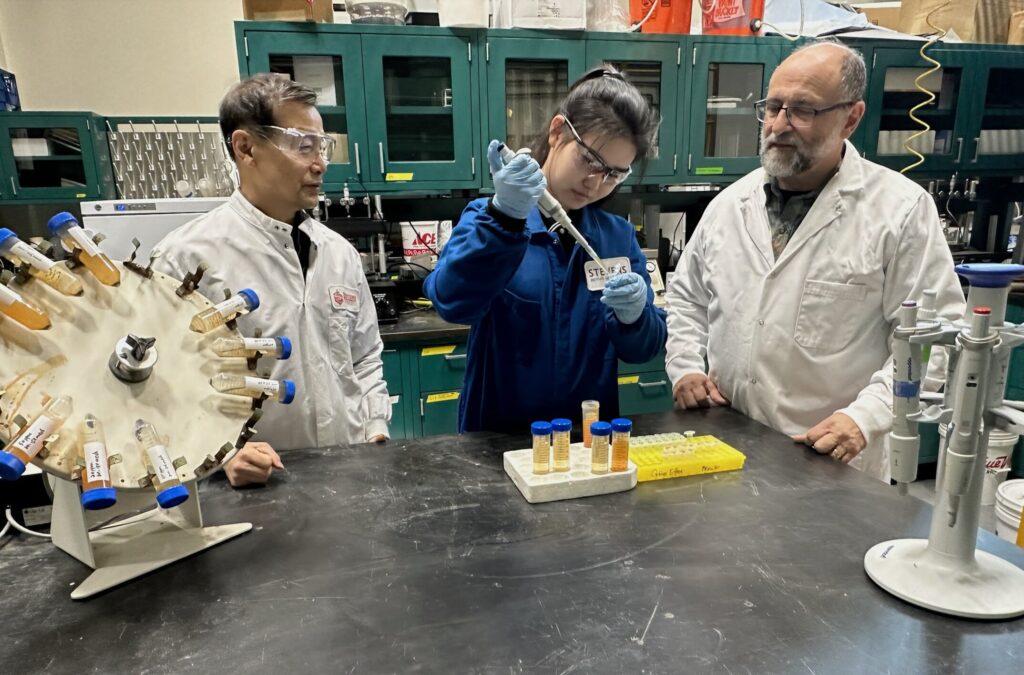
HOBOKEN, NJ – In a groundbreaking study, researchers at Stevens Institute of Technology have discovered that iron powder significantly outperforms activated carbon in removing PFOS, a notorious “forever chemical,” from water sources.
Immediate Impact
The study, led by professors Xiaoguang Meng and Christos Christodoulatos, along with doctoral student Meng Ji, reveals that iron powder, or microscale zero-valent iron (mZVI), is 26 times more effective than activated carbon per unit surface area in adsorbing PFOS from water.
PFOS are synthetic compounds used in non-stick cookware, carpets, and firefighting foams. They are part of PFAS, linked to health issues like liver disease and cancer.
Key Details Emerge
PFOS, or perfluorooctane sulfonate, is part of the larger class of chemicals known as PFAS (per- and polyfluoroalkyl substances), which have been linked to severe health risks. The widespread use of PFOS in consumer products has led to contamination in soil and drinking water, posing significant health hazards.
Activated carbon has traditionally been employed in water filters to remove such contaminants through adsorption. However, the new study indicates that mZVI offers a more potent alternative, even when the iron rusts in water.
Industry Response
According to Meng, iron powder is not only more effective but also more cost-efficient compared to activated carbon. “Iron powder is commonly used for water treatment because it’s cheap—it’s cheaper than activated carbon,” Meng stated.
By the Numbers
The research found that iron powder’s adsorption properties remain largely unaffected by rust, maintaining its effectiveness in PFOS removal.
What Comes Next
The unexpected findings have sparked interest among other researchers. Meng and Ji plan to delve deeper into understanding why rusted iron continues to be effective in PFOS adsorption, which could influence the development of large-scale water purification technologies.
“Now we need to do more research to find out why,” Meng explained. “This is important for the development of large-scale removal technologies.”
Background Context
PFOS and PFAS have been under scrutiny due to their persistence in the environment and potential health impacts. Traditional methods of removal have relied heavily on activated carbon, but this new research suggests a shift towards more efficient and economical solutions.
Expert Analysis
Experts in environmental science have noted the significance of this discovery. The ability of iron powder to maintain its adsorption capabilities even when oxidized opens new avenues for water treatment technologies.
Regional Implications
The findings could have far-reaching implications for regions struggling with PFOS contamination. Implementing iron powder in water treatment facilities could enhance purification processes while reducing costs.
Timeline of Events
- March 19, 2025: Study published in Environmental Science & Technology.
- Research highlights iron powder’s superior adsorption properties.
- Future research planned to explore the underlying mechanisms.
The study, titled “Kinetic and Mechanism Study of PFOS Removal by Microscale Zero-Valent Iron from Water,” was published in the journal Environmental Science & Technology, providing a detailed account of the research findings and their potential impact on water purification technologies.
For more information, refer to the study by Meng Ji et al., available in Environmental Science & Technology (2025). DOI: 10.1021/acs.est.4c12301.







